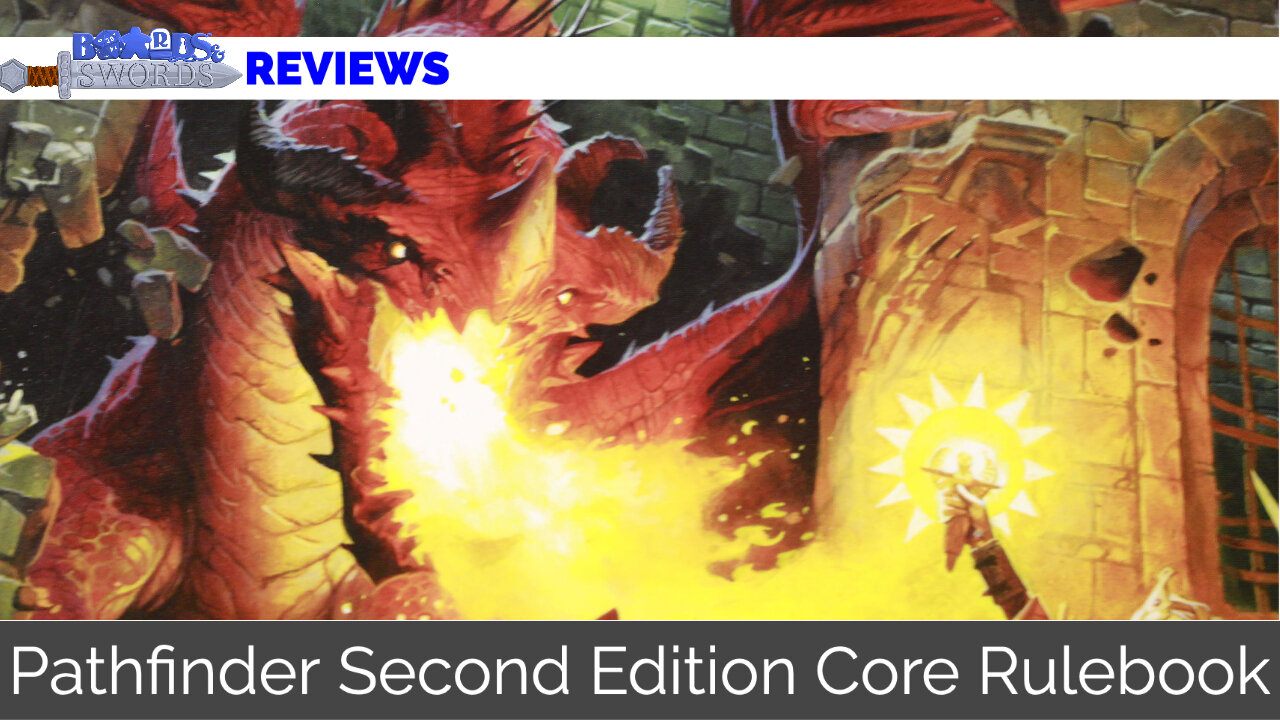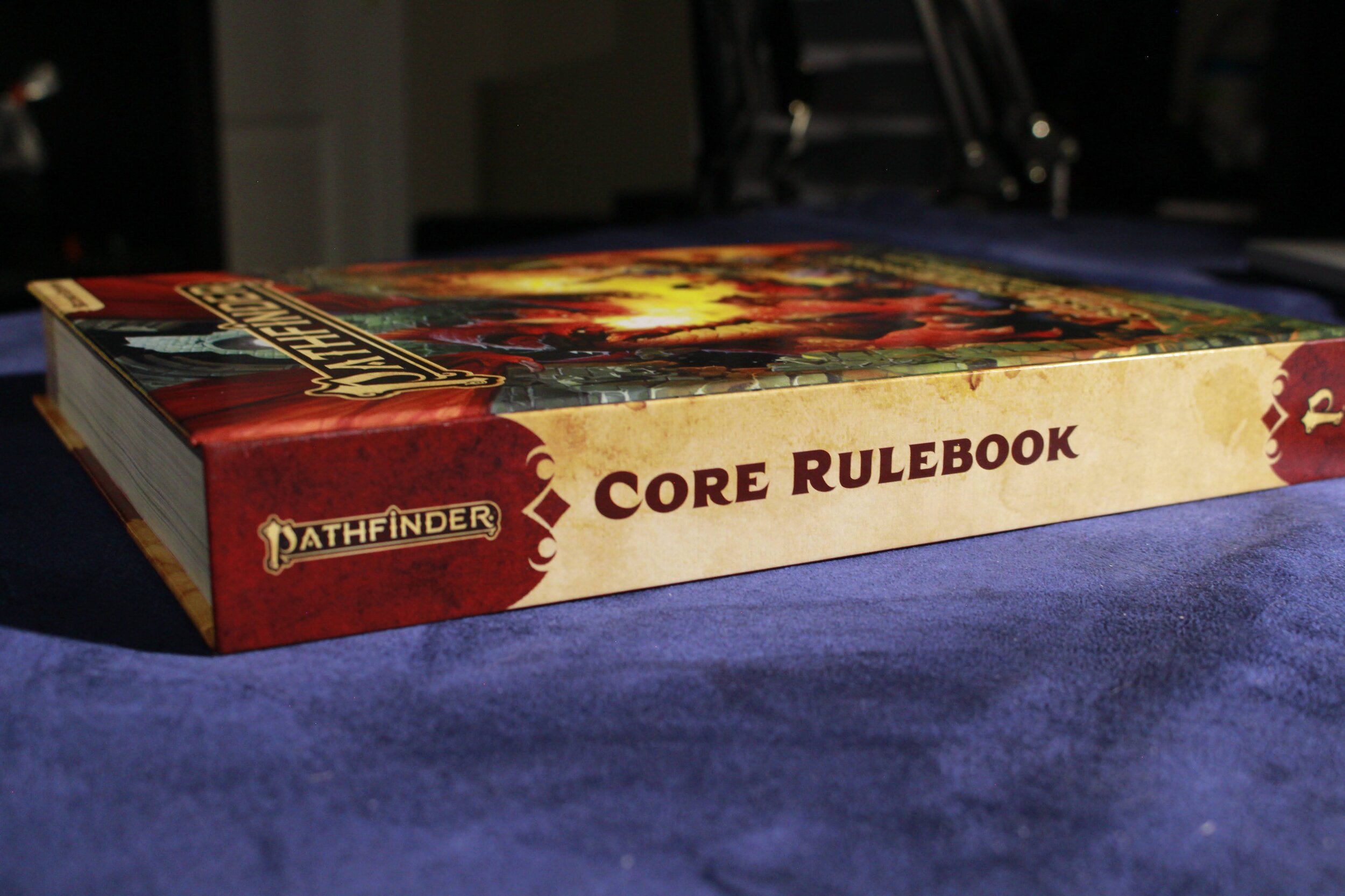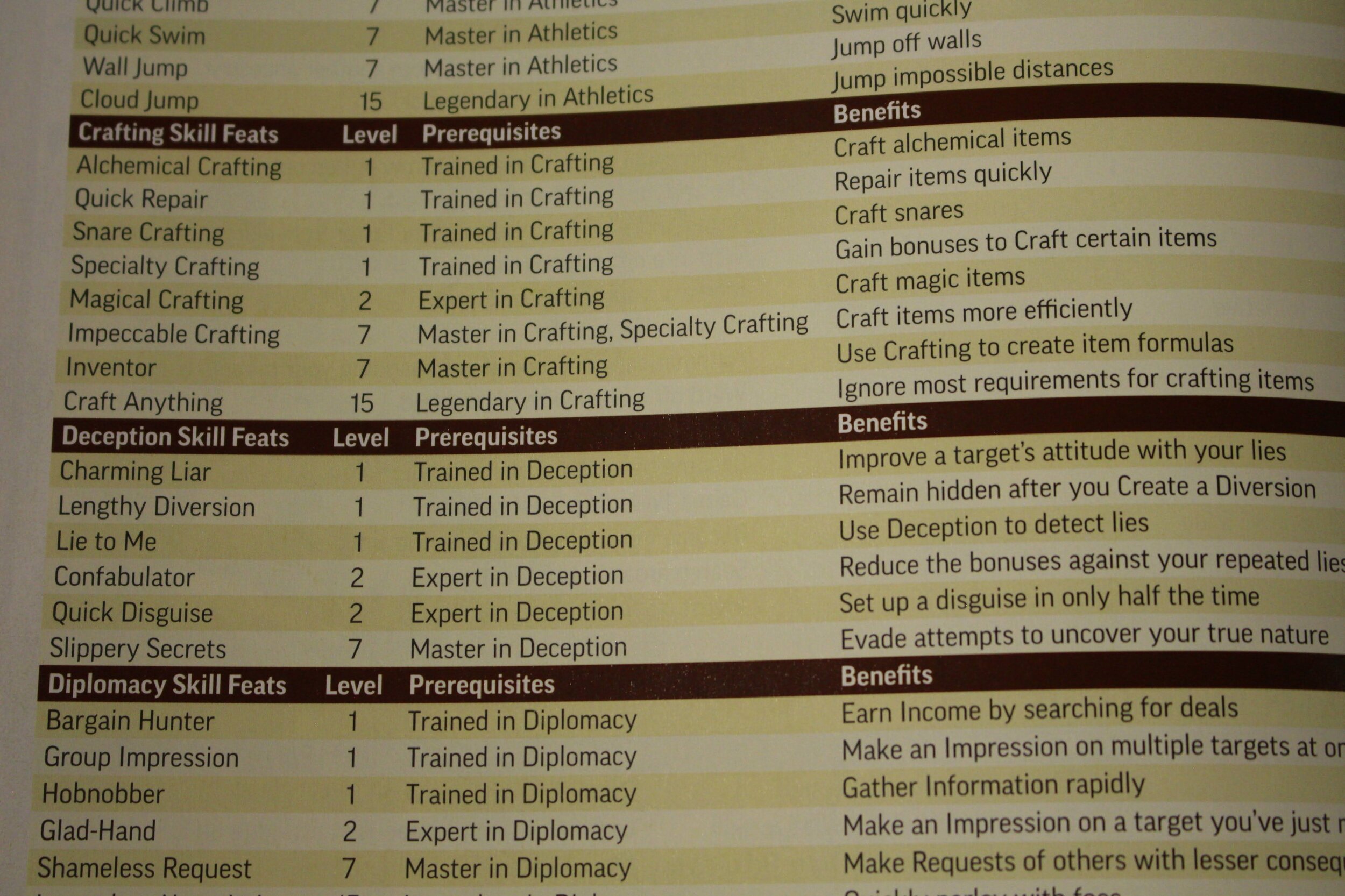The “Euro” Game of RPGs - A Review of Pathfinder Second Edition
By Chris Renshaw
There are two sides to every coin. For instance, some might say that this review is too little, too late, as we are coming up on the 1 year anniversary of the release of Pathfinder Second Edition (Pathfinder2e, or PF2e for the rest of this article). Yet, with the Humble Bundle of Pathfinder Second Edition going on as I write this, maybe it’s the perfect time, as many new people have been exposed to this game.
Ideally, I would have liked to have written this review months ago, but look at the size of this book! To make a PF pun, it feels like a “feat” to make your way through the entire book. Also, due to the nature of Pathfinder, which we’ll get into more later, the book is a complicated read. Many times I would work my way through the book, only to have to put it down and read/work on something else as there is a lot of information packed into 638 pages.
But first, a disclaimer.
Disclaimer: While I have played Pathfinder 1st edition a few times, I do not consider myself an expert on the system or on the lore/world. Therefore, there is the possibility I misinterpret/misread/misspeak on something. If so, please let me know in the comments, and I’ll try and make edits to this where applicable.
….Also, you’ll see me compare Pathfinder to Euro games later on. I recognize there are far more “heavier” or “crunchier” RPGs than Pathfinder.
I’m going to be bringing up the “2 sides to a coin” bit a couple of times, because it seems really relevant when talking about Pathfinder. For instance, we can break down the people likely to read this review into 2 groups: people who have never played Pathfinder and those who played first edition and are wondering what the differences are (Editor’s Note: yeah technically there are people who have played 2e and are just curious what I think of it, but whatever it sounded really cool).
Going backwards before we go forwards
Let’s talk about Pathfinder as a whole first. To summarize over a decade worth of history, basically when Wizards of the Coast left the 3.5 edition of Dungeons & Dragons behind and came out with 4th edition, there were a lot of 3rd party creators that had built up their whole companies on this game, now left in the dust. Also left in the dust were a ton of gamers who were not enthralled at all by D&D4e. So Paizo, one of those 3rd party creators, took the open license for D&D3.5e and made a bunch of tweaks and fixes and released it as the Pathfinder Roleplaying Game.
This gave Paizo 10 years worth of adventures, supplements, and other related products. The game even outsold D&D for several years in the early 2010’s. For someone just getting into the hobby now, this might seem like an impossible “feat” (Editor’s Note: hehe), but Paizo pulled it off. Granted, they took advantage of a void that D&D created with their 4th edition and the large scope of testing that went into making 5th edition, but it’s still impressive. However, 10 years is a long time for any game to stay relevant to gamers (aka profitable to the company), and so Paizo announced that a “second edition” of Pathfinder was coming.
So here we are. A game whose foundation was ultimately “we don’t want to change” is now...having to change. What are those changes? We’ll get to that in a second. First, we have to return to the coin bit. In the past 10 years, we have seen an explosion of indie games in the RPG world. There have been all kinds of new games created, but one type of game that has gotten really popular in that time is the “story game”. These are the types of games such as Fate or any of the Powered by the Apocalypse style of games. The rules of these games tend to be not as complex, and are built on helping players tell a good story. If we were to draw a comparison to board games, they would be closer to “ameritrash” or “thematic” games.
Hello from the other side
Pathfinder is the other side of that coin. If you are familiar with board games, Pathfinder is your heavy Euro game. Maybe even an 18XX game. When I play an 18XX style game, I’ll be able to clarify that comparison. Pathfinder details Every. Single. Thing. While “story” games allow player freedom by restricting rules and allowing players to go off script to their heart’s content, Pathfinder is a rugged construct of rules that provides freedom through a different way. That way being the freedom of choice.
When D&D 5th edition came out, there was a large variety of player options in the Player’s Handbook. But if you played a lot of D&D5e, you could find yourself bored with the number of options in the core game. Not until later books did more options open up and thus more ways to change up characters. With the Core Rulebook of Pathfinder2e, I doubt you’ll have that problem. While I suspect that Paizo will be quick to come out with many more supplements than they have already, there are sooooooo many options in the Core Rulebook that you could get by with just that book for a very long time. Someone used to story games that played D&D5e when it first came out may have had a unique idea for a character but had trouble translating that into the options the game had. That person would not have the same problem with Pathfinder.
In fact, this is what draws people the most to Pathfinder. The ability to create the most unique character by taking pieces of this and pieces of that and combining them together. Going back to the board game comparison, it’s not unlike watching a “Euro” gamer put together their engine that will amass them a ton of points at the end of the game.
Pathfinder v. Pathfinder2e: Dawn of Just Options
You’ll notice that we are very deep into this review and yet I still haven’t separated out the differences between Pathfinder and Pathfinder 2e. That’s because to me (remember, not a Pathfinder guru), the core of the game feels the same to me. There are a bunch of mechanical changes to the game, but the way the game plays is still very similar. The 2 places that have the biggest changes are how encounters are run and character creation.
But wait, aren’t those like *the* most important parts? Well yes, but while these two bits are very different, I feel like the “spirit” of these parts still feels like Pathfinder to me. Pathfinder 2e breaks away from the “Character = Race + Class” formula that has been embedded in D&D forever (I’ll use the term “D20 games” for D&D and other related games from here out). There are a lot of reasons why in 2019 (when PF2e came out), there’s not a good reason for “Race” to be a generic descriptor of an entire group of people. I wont get into those reasons here, you’ll have to Google it yourself if you are curious. Instead, Pathfinder changes the equations to be “Character = Ancestry + Background + Class”. Ancestry is similar to the role that Race was previously, while removing the notion that “all people of X race act in X way”. Background is also very similar to the Background features introduced in D&D5e. However, while D&D used Backgrounds as more of an afterthought, providing your character with some additional skills and bonuses after you made up the “heart” (Race & Class) of your character, PF2e makes the Background more of an integral part of the character.
Most “D20 Games” give you various ways to create your various ability scores. Then, your race will modify those stats up and down. In Pathfinder2e, you “build” your character from the ground up: everyone starts with 10s in every stat. Then, as you make choices with your Ancestry/Background/Class, those choices will make your stats go up and/or down. And this is what I mean by keeping the same “spirit” of Pathfinder with these changes: for a lot of people, they will end up playing it the same way: making the choices they need to make to get the stats where they want them to be. This way, though, it gives you more of a feeling that each aspect of your character is being baked into their stats and abilities.
Some new rules to encounter
The second biggest change is how player actions work in encounters. Normally, in D20 style games, you would have a “standard” action and a “move” action to start with, then having the option to ignore the standard action to take another move yada yada yada and so on. Pathfinder takes this concept and borrows a bit of modern board gaming by making player actions a “resource economy”. What I mean by that is that every turn, each player gets 3 “actions”. Some things require only one action to do, such as interacting with an item, standing up, attacking, etc. Some things, however, require more actions. Readying an action for a specific moment, for instance, takes 2 actions. Many spells require multiple actions in order to trigger. While for some people, it may take a while to get used to the way this is laid out, I think ultimately (again), once you are familiar with the terms, combat is going to have the same feel as Pathfinder1e.
Final Thoughts
From the beginning, I saw the second edition of Pathfinder as necessary just for Paizo to keep making money. After reading through the Core Rulebook, I now understand that it’s more than just that. Gaming has changed since 2009 when the original Pathfinder Core Rulebook came out. There’s been an explosion of new people and new ideas out there, and Pathfinder2e allowed Paizo to write a version of Pathfinder that fits this new dynamic.
For instance, the book includes a lot of safety tools for GMs that were not included in the original edition. Talking about “lines” and “veils” and the “X-card” are items that not every group is going to need, but they are stuff that GMs need to consider about their players and making sure that everyone is comfortable with the game and are having a good time. Also, one of Paizo’s strongest abilities is their storytelling, so I’m really drawn into the “Age of Lost Omens” setting they have created, where all prophecies have broken down and aren’t coming true.
This game is not for everyone, and I’m sure that the sheer number of rules and options will be a big turnoff for a lot of people. Yet, I would say that while Paizo needed to lay out in detail all the options for people, you and your group can change the system to simplify it as much as you need to. The Game Mastering section of the book does a good job of showing you how you can quickly make rules decisions instead of spending hours looking up each individual circumstance and all the “proper” modifiers required. And that circles back to the freedom of choices that I mentioned earlier: the game can have as little or as much as you want to have in your sessions.
Am I going to abandon all other games and become a Pathfinder faithful? Certainly not. But it does make me excited to play Pathfinder again, especially some of the unique stories and adventure paths that Paizo has on their website. That means that Paizo ultimately succeeded with the book for me, and I suggest you check out the game and see if it is right for your group.
What’s your experience/opinion with Pathfinder? Am I totally wrong? Let me know in the comments below, or on Twitter / Facebook








